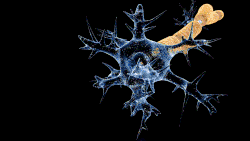Guillain–Barré syndrome
Guillain–Barré syndrome (GBS), sometimes Landry's paralysis or Guillain–Barré–Strohl syndrome is a syndrome that causes weakness of the feet and hands. Guillain–Barré syndrome is rare, at 1–2 cases per 100,000 people annually, but is the most common cause of acute non-trauma-related paralysis. The syndrome is named after the French physicians Georges Guillain and Jean Alexandre Barré, who described it in 1916.
Guillain–Barré Syndrome Media
A scanning electron microscope-derived image of Campylobacter jejuni, which triggers about 30% of cases of Guillain–Barré syndrome
Georges Guillain, together with Barré and Strohl, described two cases of self-limiting acute paralysis with peculiar changes in the cerebrospinal fluid. He succeeded his teacher Pierre Marie as professor of neurology at the Salpêtrière hospital in Paris in 1925.



